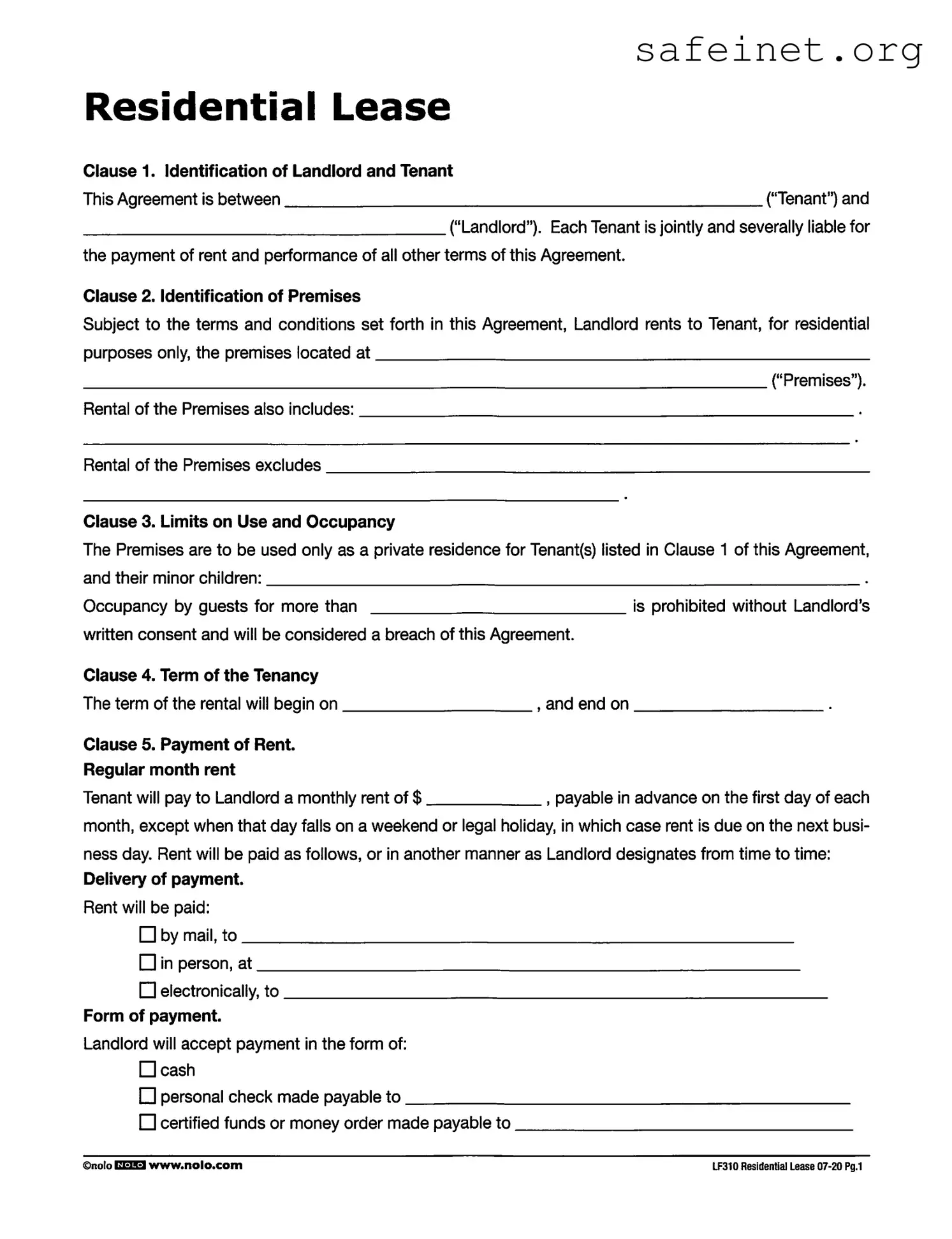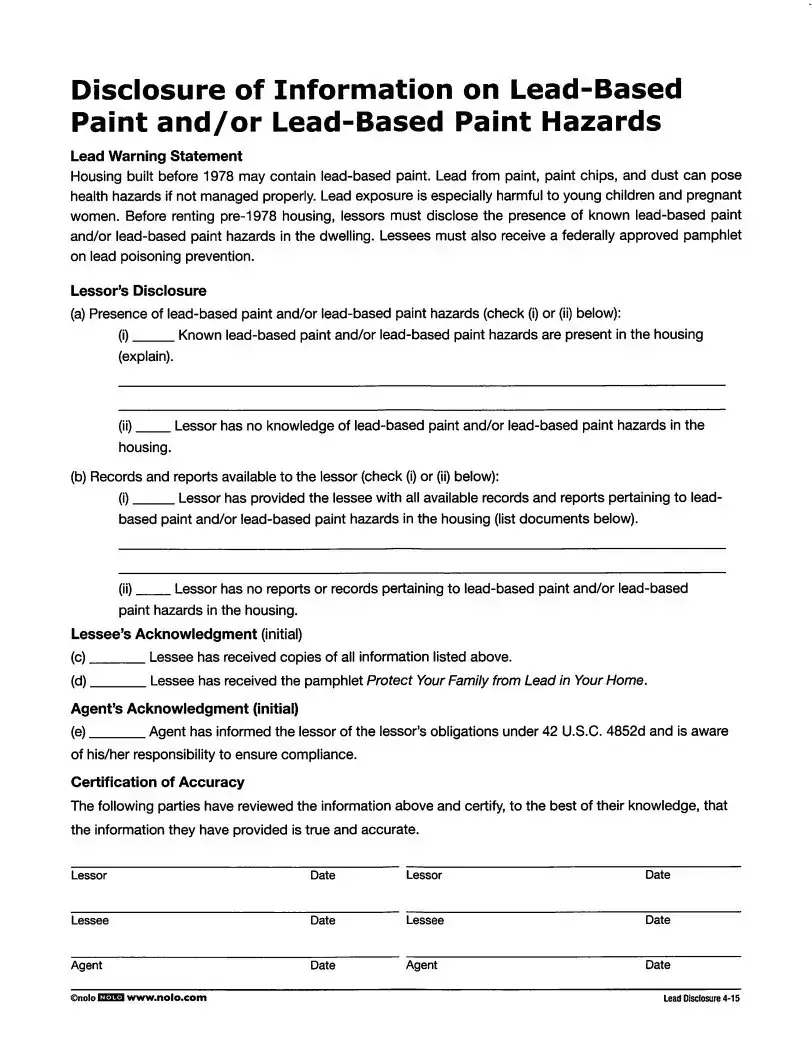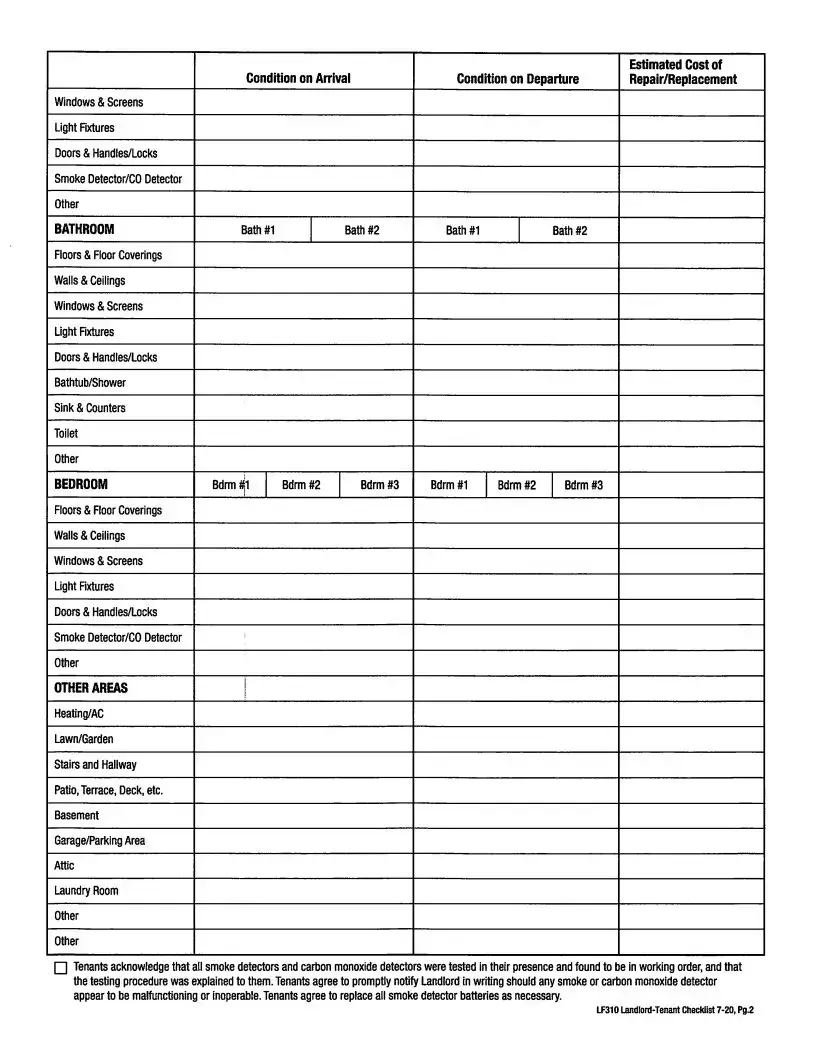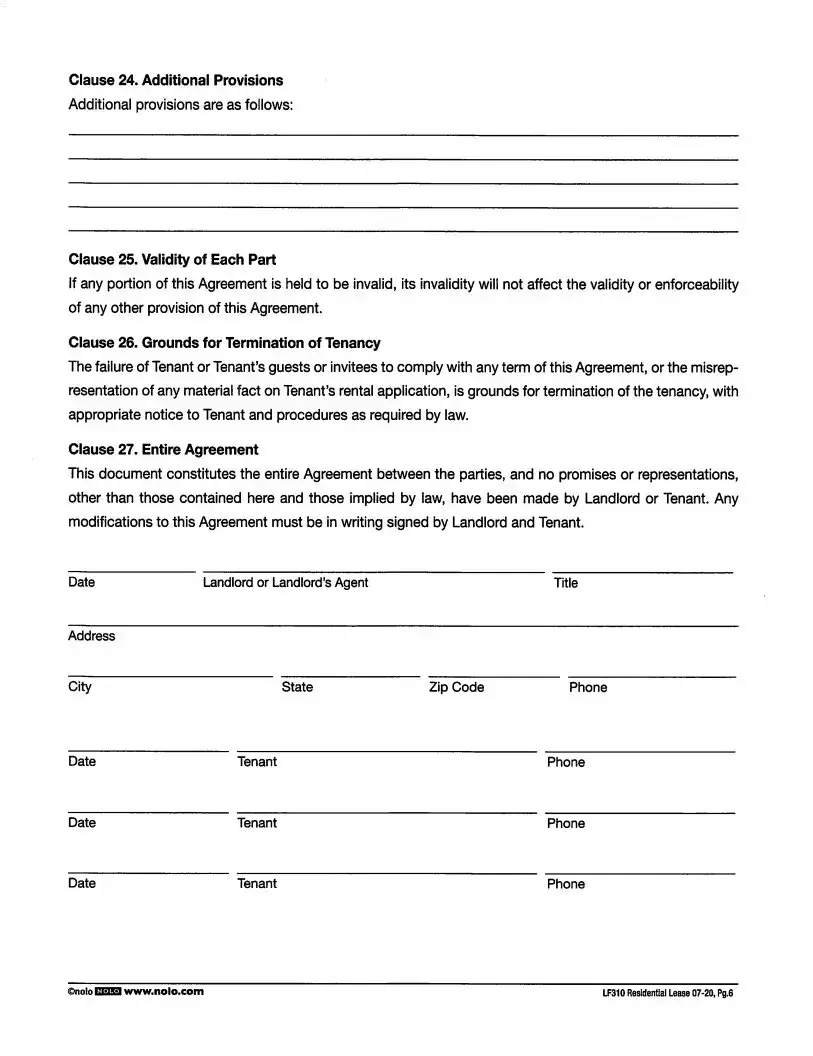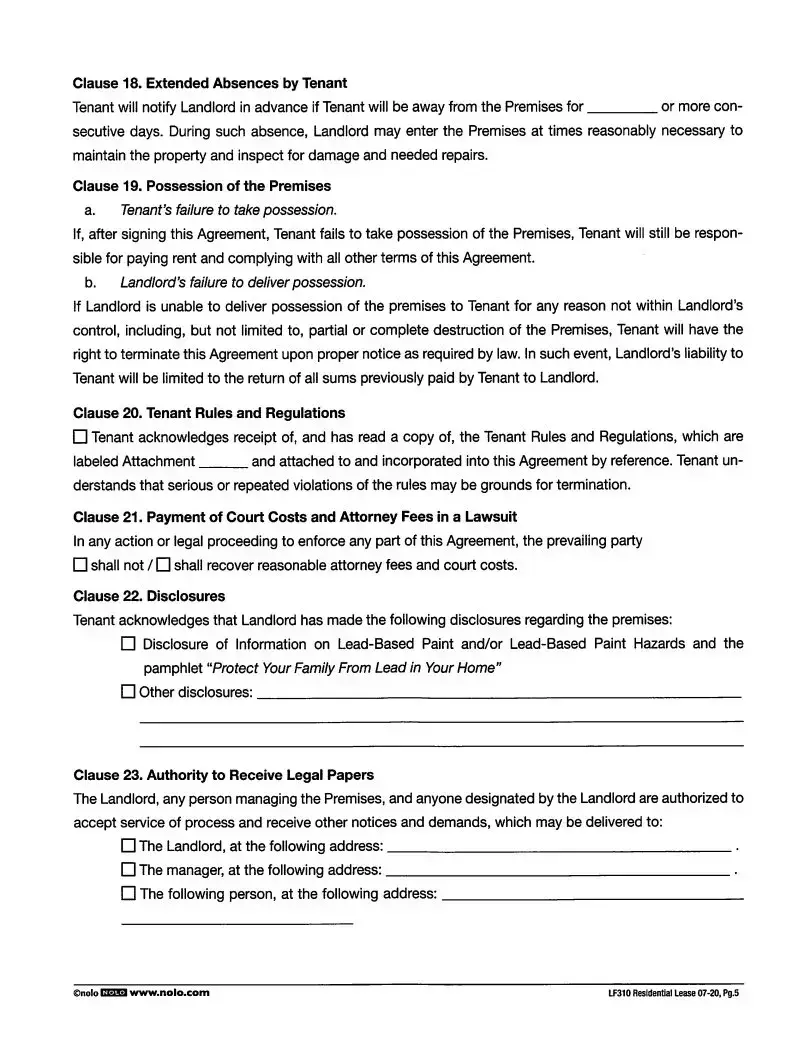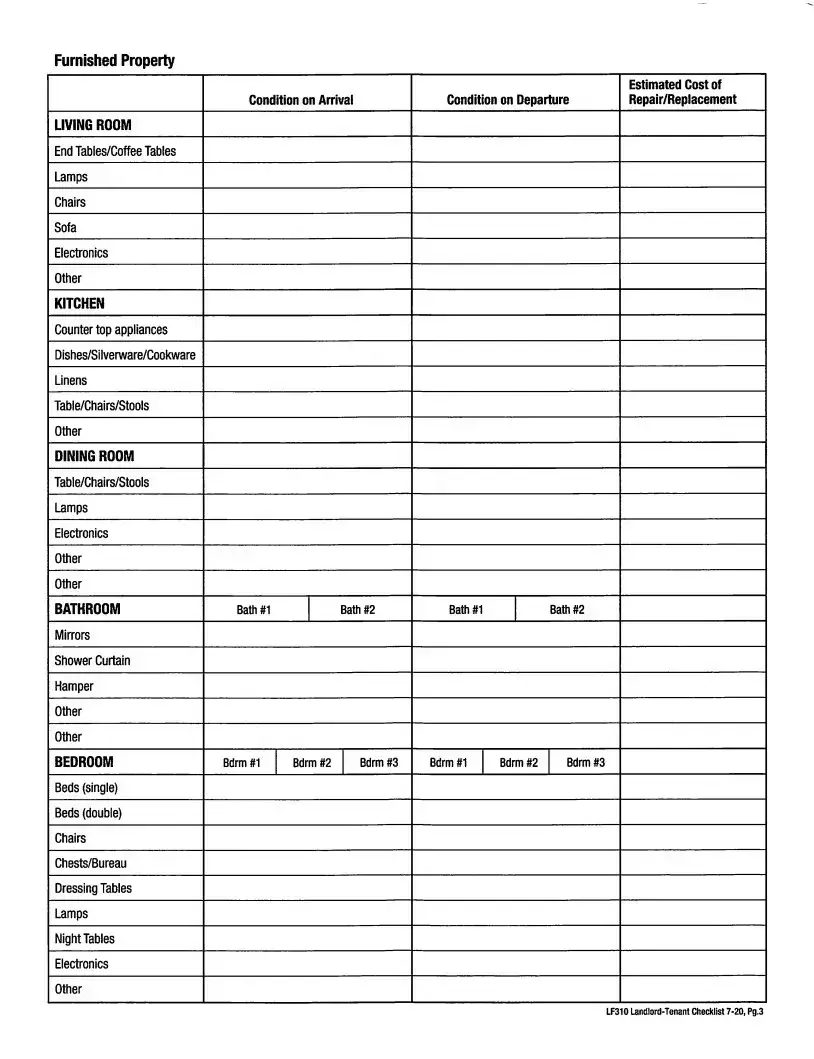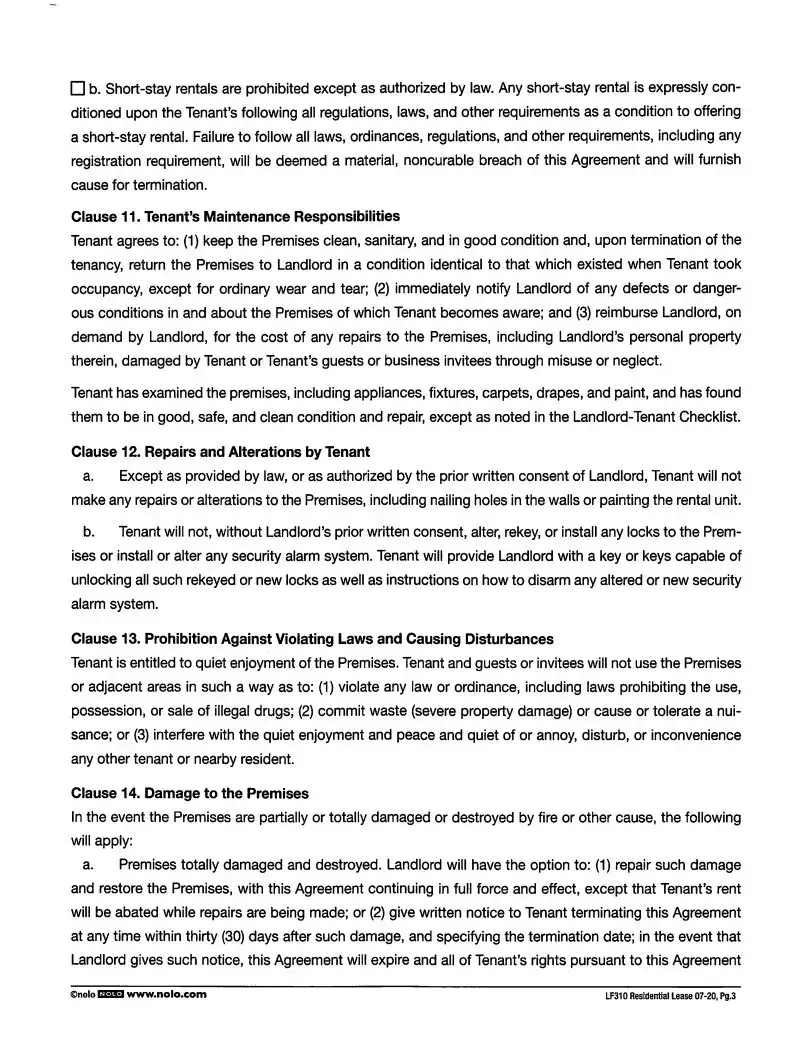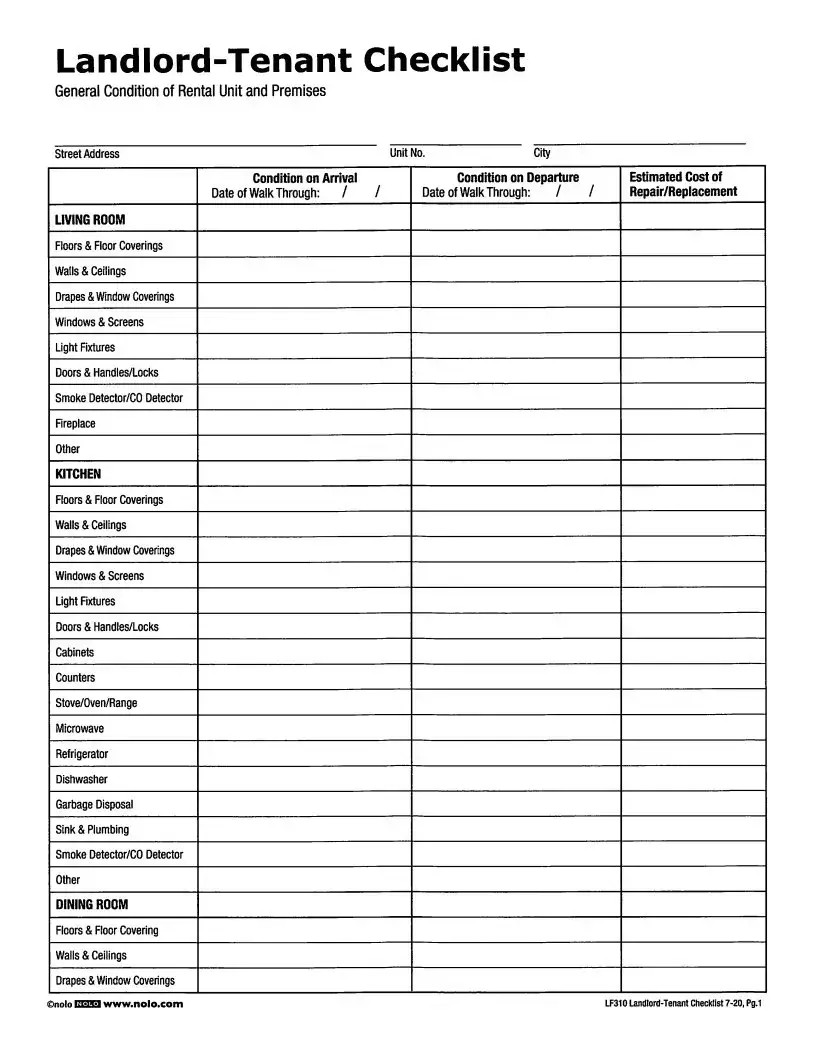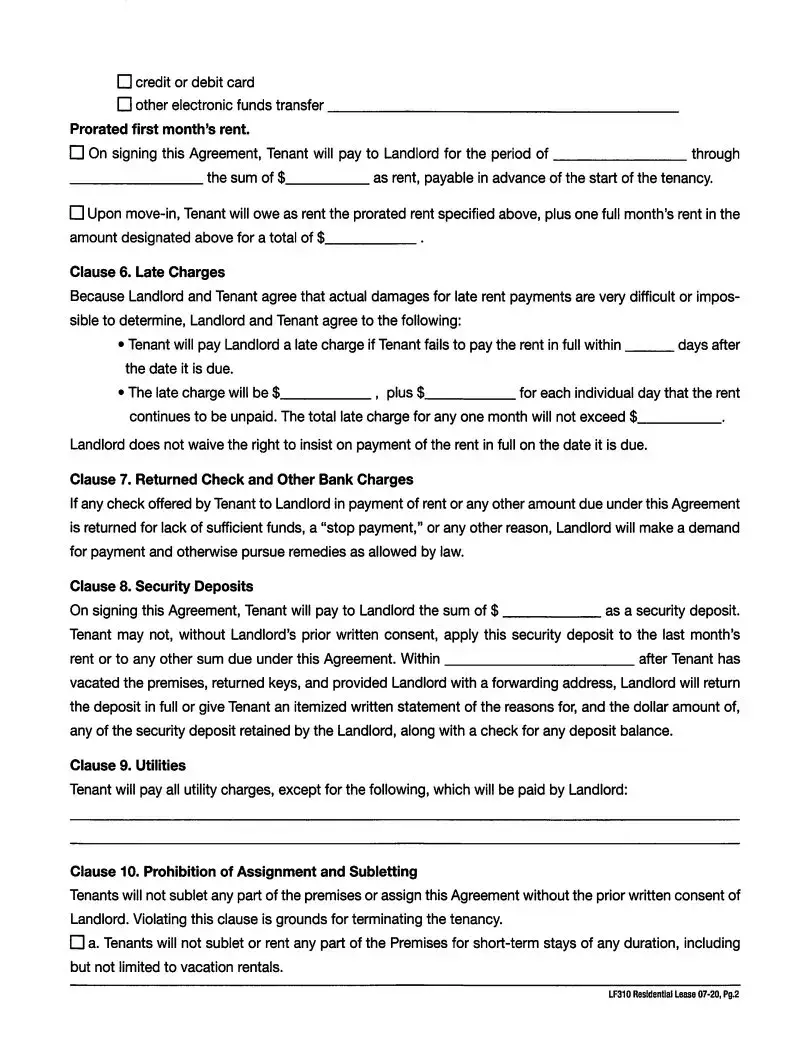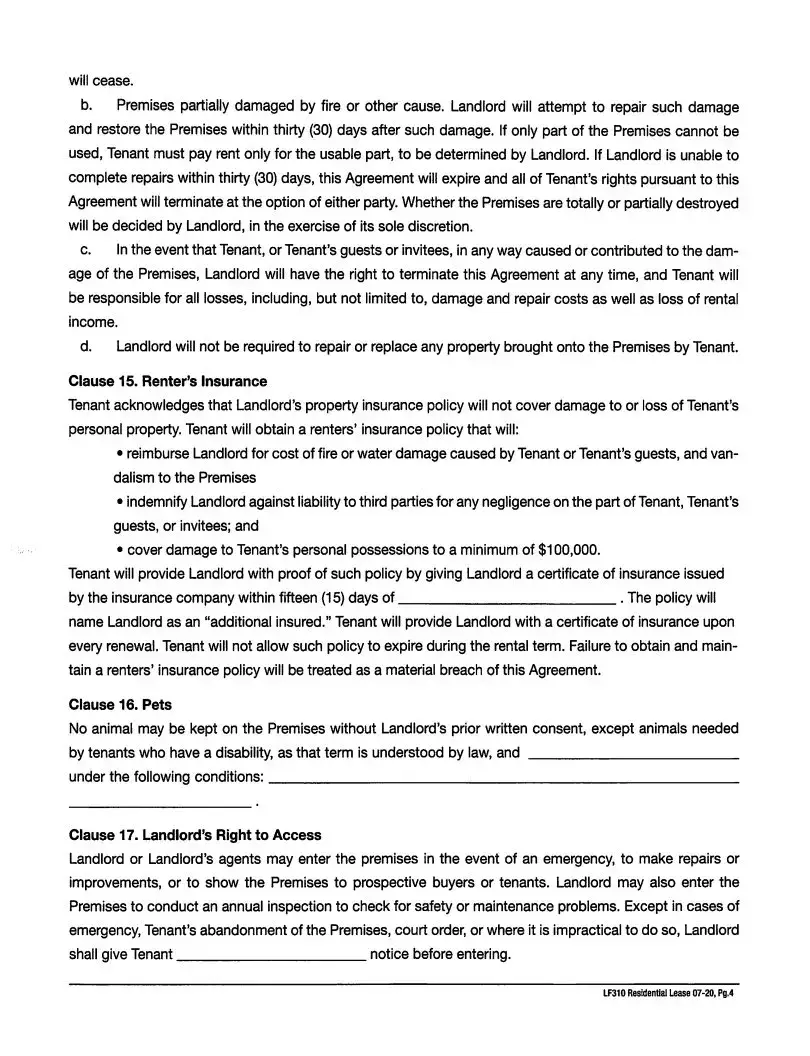What is the purpose of the Lf310 Residential Lease form?
The Lf310 Residential Lease form serves as a legal agreement between a landlord and a tenant, outlining the terms of renting a residential property. The form clearly identifies both parties, the property being rented, the rental payment details, and the rules governing the use and occupancy of the premises. This document helps protect the rights of both the landlord and the tenant and serves as a reference for resolving any disputes that may arise during the tenancy.
Who is responsible for paying rent under this lease?
According to the lease, each tenant listed is jointly and severally liable for the payment of rent. This means that all tenants are responsible for ensuring that the total rent is paid on time, regardless of individual arrangements. If one tenant fails to pay, the others can be held accountable for the entire amount. Clear communication and timely payments are key to maintaining a good landlord-tenant relationship.
What happens if rent is paid late?
If rent is not paid in full within the specified number of days after it is due, a late charge will apply. This charge includes a set fee, along with an additional amount for each day the payment is overdue. The lease clearly states that these charges are agreed upon by both parties to address the difficulties of determining actual damages related to late payments. It's important for tenants to understand these terms to avoid unexpected extra costs.
Can tenants sublet the premises?
Subletting the premises is prohibited unless the tenant obtains prior written consent from the landlord. This rule applies to any part of the premises and is in place to help the landlord maintain control over who resides in the property. Violating this clause can lead to the termination of the tenancy, which underscores the importance of adhering to this provision.
What is the security deposit, and how is it handled?
Upon signing the lease, tenants are required to pay a security deposit, which is a sum held by the landlord to cover potential damages or unpaid rent. Tenants cannot use this deposit for the last month's rent without the landlord’s prior written consent. After vacating the premises, the landlord must return the deposit within a specified timeframe or provide an itemized account of any deductions made. This ensures transparency and helps maintain trust between the landlord and tenant.
Who is responsible for paying utilities?
Typically, tenants are responsible for all utility charges, but the lease may specify which utilities, if any, are paid by the landlord. Understanding these responsibilities is crucial for tenants to avoid any conflicts regarding payment obligations. Having a clear agreement helps both parties manage their expectations and financial planning related to living in the property.
